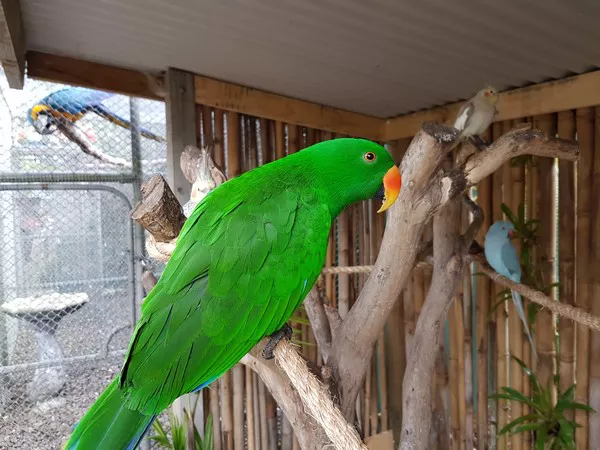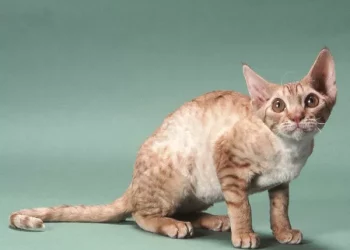Akita dogs are renowned for their majestic appearance and luxurious double coats, which not only provide insulation but also contribute to their striking beauty. However, with such magnificent coats comes shedding. Shedding is a natural process for all dog breeds, but understanding when and how much your Akita will shed can help you manage their grooming needs more effectively. In this article, we delve into the shedding patterns of Akitas, exploring the months during which shedding occurs and providing valuable tips to help you maintain a well-groomed and happy Akita companion.
Understanding the Akita Coat:
Understanding the Akita coat is essential for comprehending the shedding patterns and effectively managing its care. Akitas have a unique double coat, consisting of an outer coat and an undercoat, each serving specific purposes. Let’s delve into the characteristics and functions of the Akita coat:
Outer Coat:
The outer coat of an Akita is composed of longer, coarser guard hairs. These guard hairs are relatively straight and provide protection against various weather conditions, such as rain, snow, and UV rays. The outer coat acts as a barrier, shielding the dog‘s skin and undercoat from external elements and potential damage.
Undercoat:
The undercoat of an Akita is a dense layer of fine, soft fur that lies beneath the guard hairs. The undercoat serves as insulation, keeping the dog warm during colder months and cooler during warmer months by trapping air close to the skin. It plays a crucial role in regulating the body temperature of the Akita.
Double Coat Functionality:
The double coat of the Akita serves as a remarkable adaptation to their natural environment. In their native Japan, Akitas were bred to withstand the harsh climates of the mountainous regions and act as versatile working dogs. The combination of the outer coat and undercoat provides insulation, protection, and adaptability in various weather conditions.
Shedding:
Akitas are known for their heavy shedding, especially during seasonal transitions. Shedding is a natural process that allows the dog to adapt to changing temperatures. The double coat of the Akita sheds and regrows as a response to variations in daylight hours and temperature. Shedding primarily occurs in the undercoat, as the dog prepares for warmer or colder seasons.
Coat Colors and Patterns:
Akitas come in a range of coat colors and patterns, including brindle, pinto, and various solid colors such as white, red, and sesame. Coat color does not directly influence shedding patterns, but it’s worth noting that lighter-colored Akitas may show shed hairs more visibly on furniture and clothing.
Coat Care and Maintenance:
Proper coat care is vital for maintaining the health and appearance of your Akita’s coat. Here are some essential care tips:
- Regular brushing:
Akitas require regular brushing to remove loose hair, prevent matting, and distribute natural oils. During shedding seasons, more frequent brushing sessions are necessary to manage the increased hair loss.
- Bathing: Akitas
are generally clean dogs and do not require frequent bathing. However, occasional baths with a mild dog shampoo can help keep the coat clean and healthy.
- Grooming tools:
Choose appropriate grooming tools for your Akita, such as slicker brushes, undercoat rakes, or grooming gloves, to effectively remove loose hair and maintain the coat’s condition.
- Professional grooming:
Some Akita owners prefer to take their dogs to professional groomers for regular grooming sessions. Groomers can provide specialized care, such as deshedding treatments or coat trims, to manage shedding and keep the coat in optimal condition.
Shedding Seasons:
Akitas experience shedding seasons throughout the year, which are influenced by changes in daylight hours and temperature. Understanding these shedding seasons can help you anticipate and manage your Akita’s grooming needs more effectively. Here are the shedding seasons typically observed in Akitas:
Spring Shedding:
Spring shedding is the primary and most significant shedding season for Akitas. As the weather starts to warm up and daylight hours increase, Akitas shed their thick winter coat to adapt to the changing climate. This shedding process, often referred to as “blowing coat,” usually occurs between the months of March and May, though it can vary depending on geographic location and individual variations.
During spring shedding, you may notice an increase in loose hair as the undercoat is shed. The amount of shedding can vary among individuals, but it is generally more pronounced in Akitas compared to some other breeds. Regular brushing during this season is crucial to remove the loose hair and prevent it from matting or accumulating in your home.
Fall Shedding:
The fall shedding season in Akitas typically occurs between September and November. As the days shorten and temperatures begin to cool down, Akitas shed their lighter summer coat and grow a thicker undercoat for insulation during the colder months. Fall shedding is often less intense than spring shedding, but it is still important to manage it to maintain a healthy coat.
During this season, regular brushing helps remove the dead hair and stimulates the growth of the new coat. It is essential to stay on top of grooming during the fall shedding season to prevent matting and ensure your Akita remains comfortable.
It’s important to note that while these shedding seasons are common, individual Akitas may have variations in their shedding patterns. Factors such as genetics, health, diet, and environmental conditions can influence the timing and intensity of shedding. Observing your Akita’s shedding patterns over time will help you understand their unique shedding cycles.
By being aware of the shedding seasons and implementing proper grooming practices such as regular brushing, bathing, and nutrition, you can effectively manage shedding and keep your Akita’s coat healthy, beautiful, and more manageable throughout the year.
Managing Akita Shedding:
Managing Akita shedding can be a manageable task with some proactive measures. Here are some additional tips to help you effectively manage shedding and keep your Akita’s coat in top condition:
Regular Brushing:
Regular brushing is essential to remove loose hair and minimize shedding. Use a high-quality brush or grooming tool suitable for your Akita’s coat type. A slicker brush or an undercoat rake can be effective in removing loose hairs from the undercoat. Aim to brush your Akita at least once or twice a week, even outside of shedding seasons, to keep the coat healthy and prevent matting.
Deshedding Tools:
Consider using deshedding tools specifically designed for double-coated breeds like Akitas. These tools, such as deshedding brushes or grooming gloves with rubber nubs, can help remove loose hair more efficiently. Remember to use them gently to avoid causing any discomfort to your Akita.
Bathing and Conditioning:
Regular bathing can help keep your Akita’s coat clean and reduce shedding. Use a mild dog shampoo formulated for double-coated breeds and follow it up with a conditioner designed to moisturize and nourish the fur. Conditioning helps to keep the coat healthy, reduces tangling, and minimizes excessive shedding.
Healthy Diet:
Providing your Akita with a balanced and nutritious diet is vital for overall coat health. Ensure their diet includes high-quality protein, essential fatty acids, and vitamins. Omega-3 fatty acids, in particular, are known to promote healthy skin and coat. Consult with your veterinarian to determine the best diet for your Akita’s specific needs.
Regular Vet Check-ups:
Routine visits to the veterinarian are essential for maintaining your Akita’s overall health, including their coat condition. Regular check-ups allow the vet to monitor any changes, detect potential health issues early on, and provide appropriate guidance on managing shedding or addressing any underlying conditions that may contribute to excessive shedding.
Manage Stress:
Stress can sometimes exacerbate shedding in dogs. Ensure your Akita has a calm and comfortable environment, with access to a quiet space where they can retreat and relax. Engage in regular exercise, playtime, and mental stimulation activities to help reduce stress levels, as this can positively impact their coat health.
Professional Grooming:
Consider scheduling regular professional grooming sessions for your Akita. Professional groomers have expertise in handling double-coated breeds and can provide specialized grooming techniques to manage shedding effectively. They can also trim and shape the coat as necessary, keeping it healthy and aesthetically pleasing.
Remember, each Akita is unique, and shedding patterns can vary. Understanding your individual dog’s shedding tendencies and taking appropriate measures to manage it will help ensure a healthy and well-maintained coat for your furry friend.
Seeking Professional Help:
In cases where an Akita’s shedding is excessive, abnormal, or accompanied by other symptoms such as skin irritation or bald patches, it is crucial to seek professional help from a veterinarian. While shedding is a natural process, certain underlying health conditions or allergies can exacerbate shedding or cause abnormal fur loss.
When you notice any unusual signs or patterns in your Akita’s shedding, it is best to schedule a visit to your veterinarian. They have the expertise to assess your dog’s overall health and identify any potential underlying issues. The veterinarian may perform diagnostic tests, such as skin scrapings or bloodwork, to rule out conditions like allergies, hormonal imbalances, or dermatological problems.
The veterinarian can provide appropriate treatment options or recommendations based on the specific situation. They may suggest changes in diet, prescribe medications or supplements, or recommend specialized grooming techniques to manage shedding. By addressing any underlying health concerns, you can effectively manage shedding and ensure the well-being of your Akita.
Remember, professional veterinary advice is invaluable when it comes to understanding and addressing any concerns related to your Akita’s shedding. Don’t hesitate to consult a veterinarian if you have any doubts or concerns about your dog’s shedding patterns or overall health.
Conclusion:
Understanding the shedding patterns of Akitas and implementing appropriate grooming practices can help maintain a healthy and beautiful coat for your beloved companion. Remember that shedding is a natural process for Akitas, and by following the tips mentioned above, you can minimize the impact of shedding on your home and keep your Akita happy and comfortable year-round.
Recommended Reading:

























